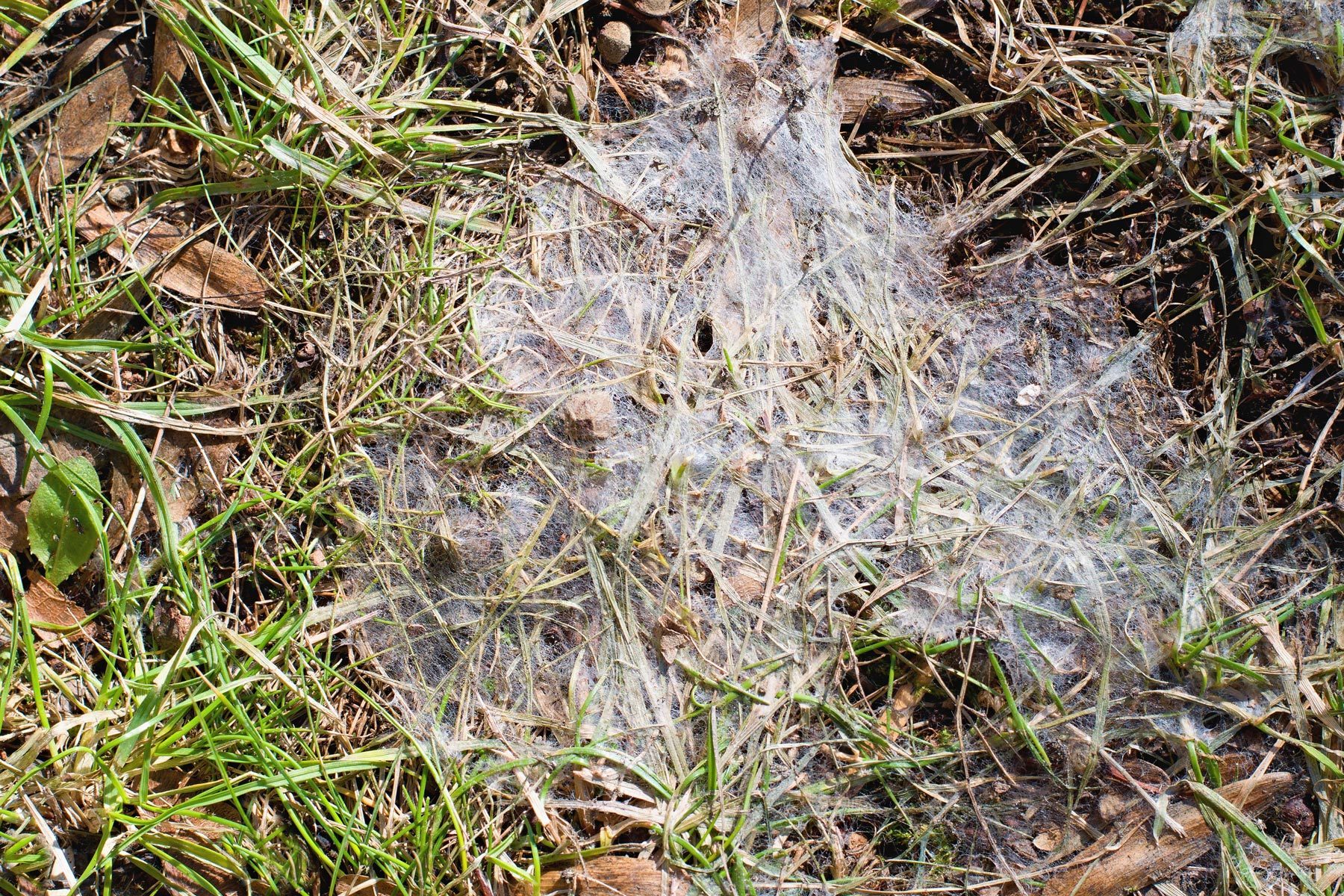As the snow melts away every spring, your lovely lawn is vulnerable to an unsightly fungus.

How to Get Rid of Snow Mold Safely

You’ve heard the old saying April showers bring May flowers, right? Well, they also bring snow mold and other lawn diseases! As the snow melts every spring, your lovely lawn is vulnerable to an unsightly fungus. This is especially common if you live in an area with heavy snowfall and your lawn is a cool-season grass like Kentucky bluegrass, perennial ryegrass, or fine or tall fescue. We spoke to mold and air quality expert Michael Rubino to learn more.
What is Snow Mold?
Snow mold is a fungal lawn disease that occurs in the spring after the snow melts. It comes in two forms: pink fungus (potentially more damaging) and gray fungus. Rubino explains that “it thrives in cooler temperatures, so the excess moisture creates perfect conditions for it to develop on lawns.” It can cause small patches of grass to die, and its fungal qualities may set off allergies for some people.
It most commonly occurs if the first large snow falls on ground that hasn’t yet frozen. This creates a perfect blanket between grass and snow for fungus to grow from the spores that lay dormant throughout the rest of the season. This can be especially damaging if that area between snow and ground stays around the same temperature for a long time. That’s the ideal snow mold breeding ground.
How to Identify Snow Mold

It’s easy to spot snow mold. According to Rubino, “If you see fuzzy growth on a lawn or patches of oddly colored grass (like pink or grayish white), especially after snow melt, this typically indicates microbial growth.” Another indicator is the sudden return of your allergy symptoms.
Is Snow Mold Dangerous?
Rubino cautions that all mold can be dangerous, but “as this specific subset is outside, the main issue is having a source of mold right outside the home.”
“As this mold grows, it will release spores into the surrounding air, which can then make their way into the home through open doors or windows,” he continues. “The higher the number of spores in the house, the lower the indoor air quality and the increased risk of colonies developing inside. ”
How to Get Rid of Snow Mold
The good news: Snow mold usually takes care of itself because it dies as temperatures increase. Gray mold dies at about 45 degrees F, and pink mold at about 60 degrees F. And the effects of snow mold aren’t particularly extreme.
If you want to get rid of it faster:
- Mow the lawn as usual because tall grass is a great breeding ground for mold.
- Gently rake over straw-colored circles to dry out the area faster.
- Delay putting chemicals on the lawn because they aren’t necessary if the grass heals itself.
How to Prevent Snow Mold
In some ways this one is out of your hands because it depends on what you can’t control: the weather. However, you can try applying a fungicide in late fall. Also, take pristine care of your lawn before the first snowfall by clearing all debris and cutting the grass short.
About the Expert
Michael Rubino is a mold and air quality expert, environmental wellness advocate, and founder of HomeCleanse, a revolutionary company with the vision to end the worldwide health epidemic caused by poor air quality and toxic indoor environments. He is also Chair of Change the Air Foundation and Host of Never Been Sicker podcast.




















